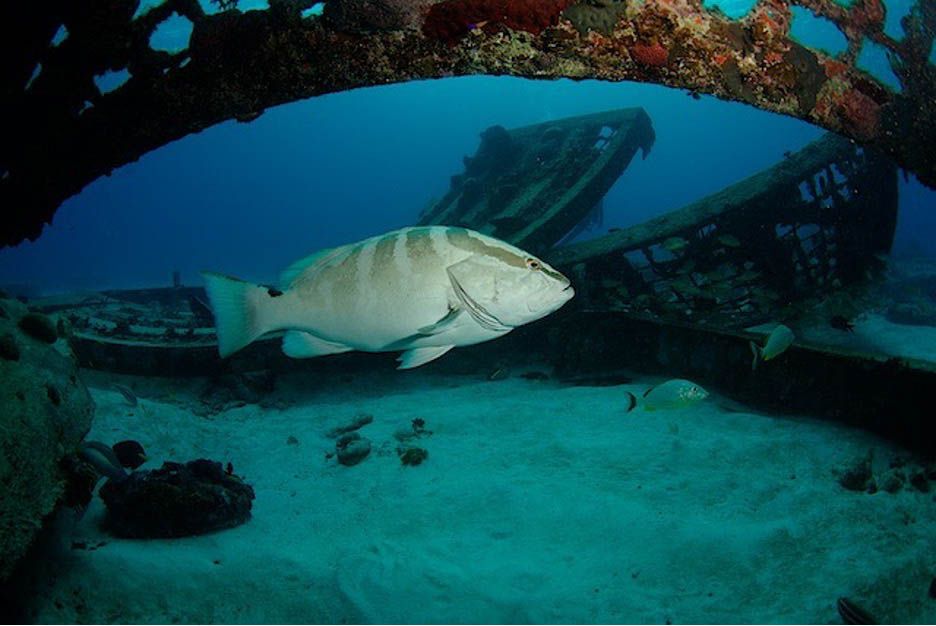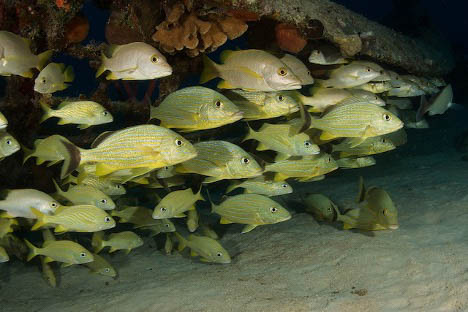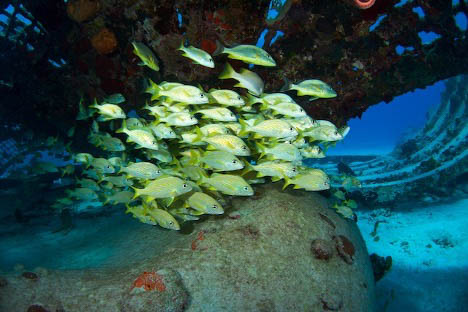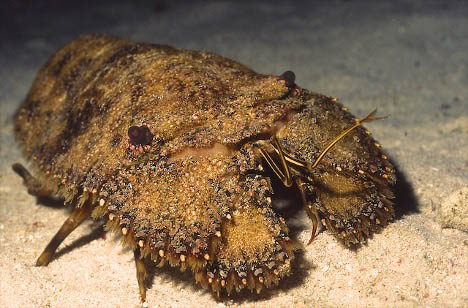Divers don’t often have the opportunity to visit the site of underwater game show sets. One exception is Thunderdome, a dive site located off the west end of Providenciales in the Turks and Caicos Islands, in the Northwest Point Marine National Park. This popular dive spot is regularly featured on the itineraries of the local live aboard yachts, the Turks and Caicos Aggressor II and the Turks and Caicos Explorer II. It is also close enough to the embarkation points for land-based operators to be one of their regular scheduled dives. Thunderdome not only gives divers a peek at the behind the scenes history of the television show, but also offers a terrific dive loaded with interesting marine life.
The premise and logistics for the show may leave most divers scratching their heads and wondering “what were the producers thinking?” The dome itself, which was the central focus of the venue, was constructed in the shallows, on the shore side of a beautiful vertical wall. Although the wall itself is an excellent deep dive, the main feature of this site is definitely the “ThunderDome,” which was originally constructed as the focal point of a French TV Show called “Le Tresor de Pago Pago” or The Treasure of Pago Pago.
The theme of the show was developed around the imagined storyline of a small fishing village named Pago Pago. The scenario was that for hundreds of years, the village stood watch, guarding an underwater temple, which contained a magic fountain that spit out pearls. According to the narrative, the underwater fountain was protected by a society of mermaids. The producers of the show did their best to convince their viewers that the show was in reality shot in Pago Pago, which is actually the name of the territorial capital of American Samoa, in the South Pacific. It was also the name of one of the historic villages in that area that bore the same name. Coincidentally, at the time the show first aired, Pago Pago was indeed a fishing village, in fact the world’s fourth-largest tuna processor. It was home to two of the largest tuna companies in the world: Chicken of the Sea and StarKist, which together exported an estimated $445 million in canned tuna to the U.S. mainland.
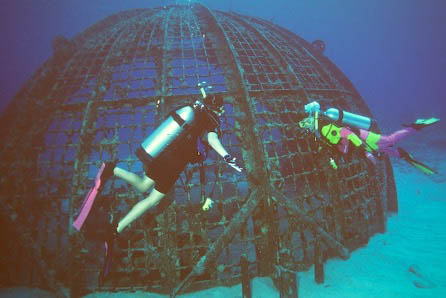
However, the game show was actually filmed in the Turks and Caicos Islands in 1992 and was Broadcast on French TV in 1993 and 1994. This dive site is situated on the shallow sandy back reef, on the shore side of a dramatic vertical wall. When it was constructed in the Turks and Caicos Islands, the top of the original dome was at a depth of 15 feet and the base of the dome sat on a flat sandy bottom in about 35 to 35 feet of water. This survivor challenge show was filmed at the beautiful Malcolm’s Road Beach on the northeast point of Providenciales. The producers of the film project constructed an elaborate set which included a tiki hut village, a rope bridge climbing array for some of the preliminary challenges, and the massive underwater steel “Thunderdome” cage. Today the tiki hut village has been replaced by the Amanyara luxury Resort, which occupies an 18,000 Acre nature preserve with over half a mile of powdery white sand beach.
The contestant couple that prevailed in the various preliminary challenges during the initial portions of the show, won the opportunity to compete in the finale. These contestants got to free-dive through a rectangular opening in the top of the dome and gather pearls that were projected into the water by a metal, fabricated stove pipe sponge that sat in the center of the dome. During the course of the challenge, the contestants would grab as many pearls as possible. When they ran out of air, they would frantically look around for one of five mermaids, which were positioned just outside the dome, at an opening or window in the metal structure. The mermaids were equipped with scuba tanks and an octopus regulator. The contestants would trade one of the pearl’s they had collected for air from a mermaid’s octopus regulator, and then resume gathering pearls. If a contestant asked the “bad” mermaid for air, he or she would receive very little if any air, and the contestant would then have to swim like mad for the surface.
Fortunately, there were no recorded deaths. However, the show was canceled after several contestants suffered air embolisms or similar DCS medical issues and had to receive treatment at the local recompression chamber to recover. Those contestants that successfully made it back to the surface received 250 Francs for each pearl they were able to collect. It is rumored that the mermaids who participated in the show, made off with all of the pearls that once littered the bottom of the dome, when they did not receive payment for their services.
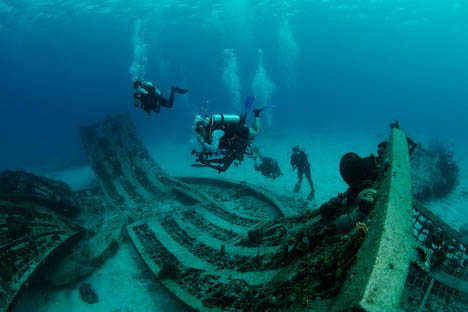
The dome itself was originally a large, heavy, steel-mesh dome-shaped structure, with a circular base. The ThunderDome collapsed during hurricane Frances in 2004. Today there are several pieces of the dome scattered haphazardly about the bottom. This site offers endless photo and video opportunities for divers. The mooring is located to the east of the wall. When the dive boat is at anchor, it will normally be oriented in an east/west direction with the stern sitting close to and above the lip of the drop-off. To explore the vertical wall before heading to the area of the dome, diver just drop off the stern dive platform and descend until they hit the bottom in about 50 feet. Continue to the west until you reach the drop-off. The wall itself is fairly steep and is covered with large sponges, which are typical in this area. If they descend along the drop-off to about 80 feet and swim toward the north, they will encounter an opening in the face of the wall. If you enter here it merges with a vertical shaft or ‘Chimney’ that rises to the top of the wall.
To find the wreckage of the dome, simply follow the lip of the wall to the south. When you find the stern of the boat, simply turn left. Swim under the keel of the boat to the east. When you get to the bow, follow the mooring line down to the mooring pin on the bottom. The remains of the show set, located just south of the mooring pin, now provides an artificial reef for local residents, that has been continuously remodeled by subsequent hurricanes. The interesting debris field that remains has attracted a wide variety of schooling grunts, School Masters, snapper and other tropicals seeking to find a safe refuge to protect them from potential predators.
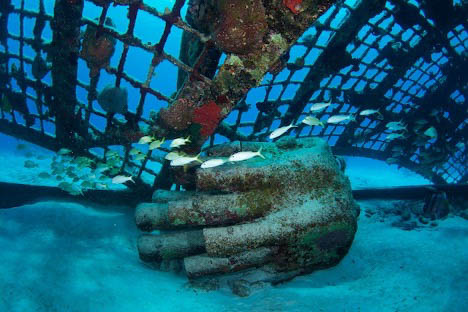
The main section of the dome is scattered across a flat sandy area, just to the south of the mooring pin. The surfaces of the many broken sections of the Dome are covered with sponges, encrusting corals, and a variety of tube worms. Beneath one section of the dome, the metal stove-pipe sponge that used to spit out pearls lies on its side, giving shelter to spotted eels, banded shrimp and a variety of other invertebrates. In protected areas beneath the pieces of wreckage, you will encounter schools of grunts, goatfish, schoolmasters and snapper that take refuge there. There are a lot of friendly tropical fish, including angelfish, Nassau grouper, graysby and squirrelfish that wander in and out of the protected areas of the dome. Many of the holes are too small to accommodate the queen angelfish, pairs of gray angelfish, white spotted filefish, horse-eye jacks, grouper, and scrawled filefish that come in to feed on algae and encrusting sponges. As a result, divers are often able to get very close to fish that are usually too skittish to easily capture in photographs. Divers will also find this to be a fantastic artificial reef featuring cleaning stations operated by red stripe cleaner shrimp and various cleaner fish. If you examine the surfaces closely, you will find many tiny secretary blennies poking their heads out of holes in the colorful surfaces.
The dome is considered by most divers to be Northwest Point’s best night dive. Macro subjects include neck crabs, octopuses, slipper lobster, nudibranchs, flamingo tongue snails, fingerprint cyphomas, rough file clams and tube worms. Divers will occasionally encounter sea turtles tucked away in a corner under one of the pieces of the dome. Octopuses, slipper lobster, spotted eels and southern rays are often encountered during a night dive.
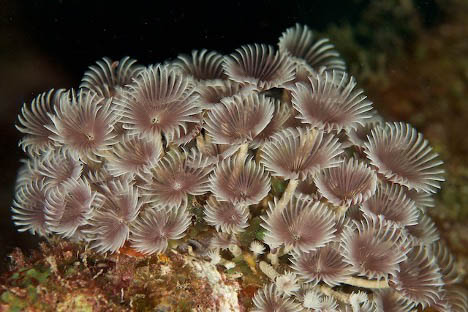
The entire back reef area near the dome comprises a series of low-profile spur-and-groove coral ridges with sand channels. Adjacent to the dome area and directly east of the mooring pin, there are several PVC “Christmas tree” structures, which are part of a reef building project undertaken by The Turks and Caicos Reef Fund, a non-profit corporation that was founded in May 2010. These structures afford a nursery for rows of staghorn corals, waiting to be re-planted in a reef rebuilding effort.
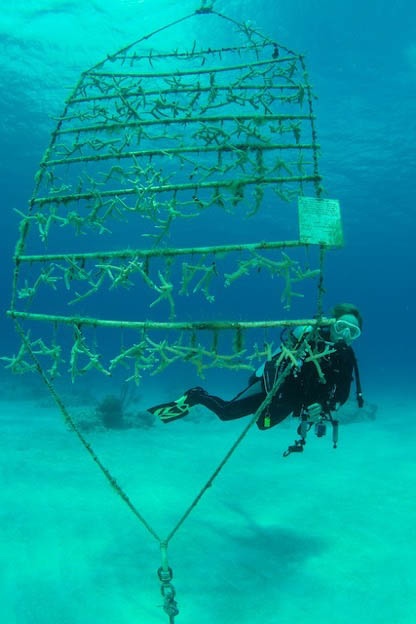
The visibility along Northwest Point is usually exceptional, often exceeding 100 feet. This area is ideal for photography. The ThunderDome, which failed miserably as a TV show, excels as one of the Turks and Caicos best dive sites. Images and video of fish, divers with fish inside pieces of the wreckage, and of course, close-up and macro subjects are just a few of the many photo opportunities.



